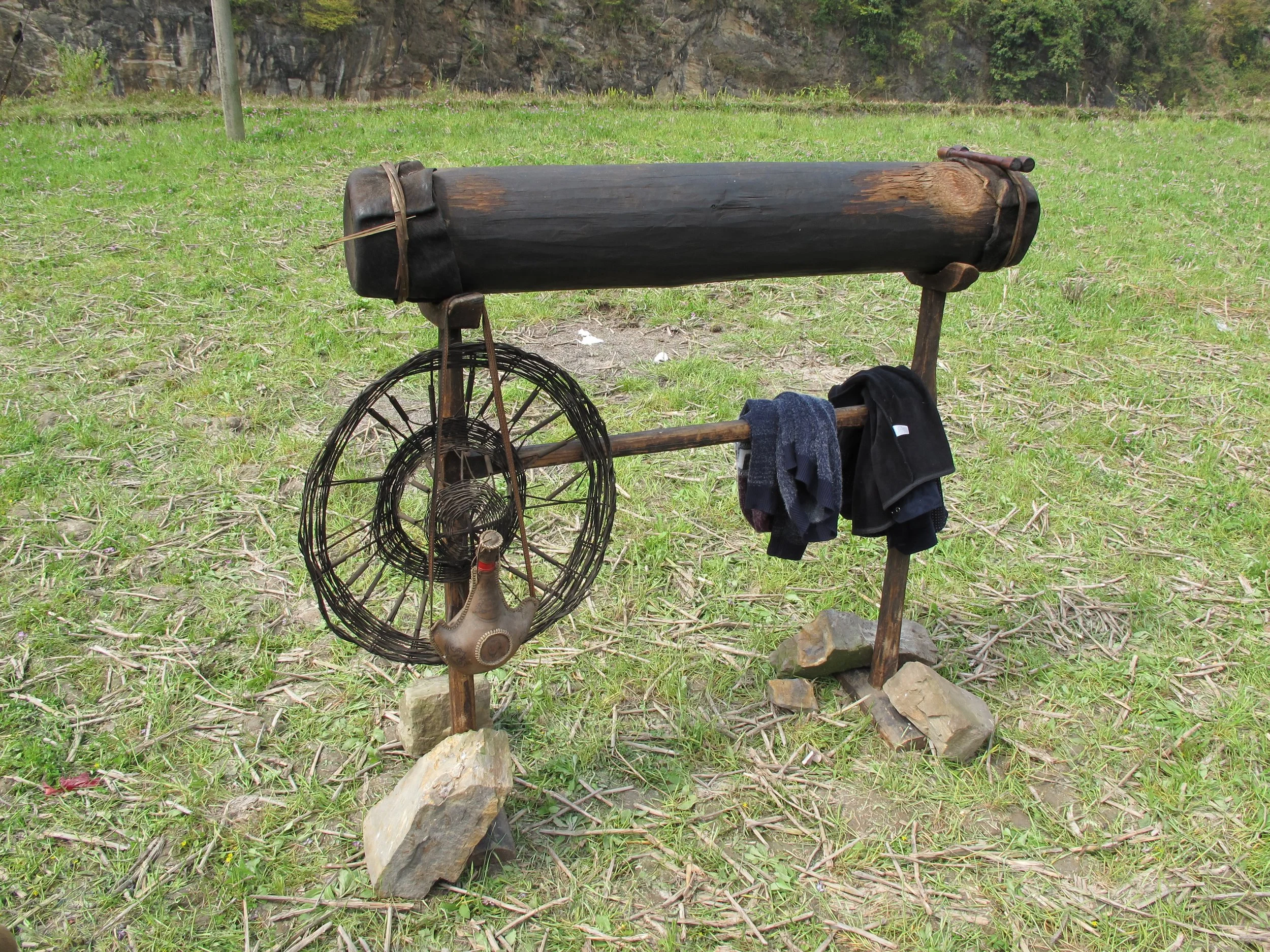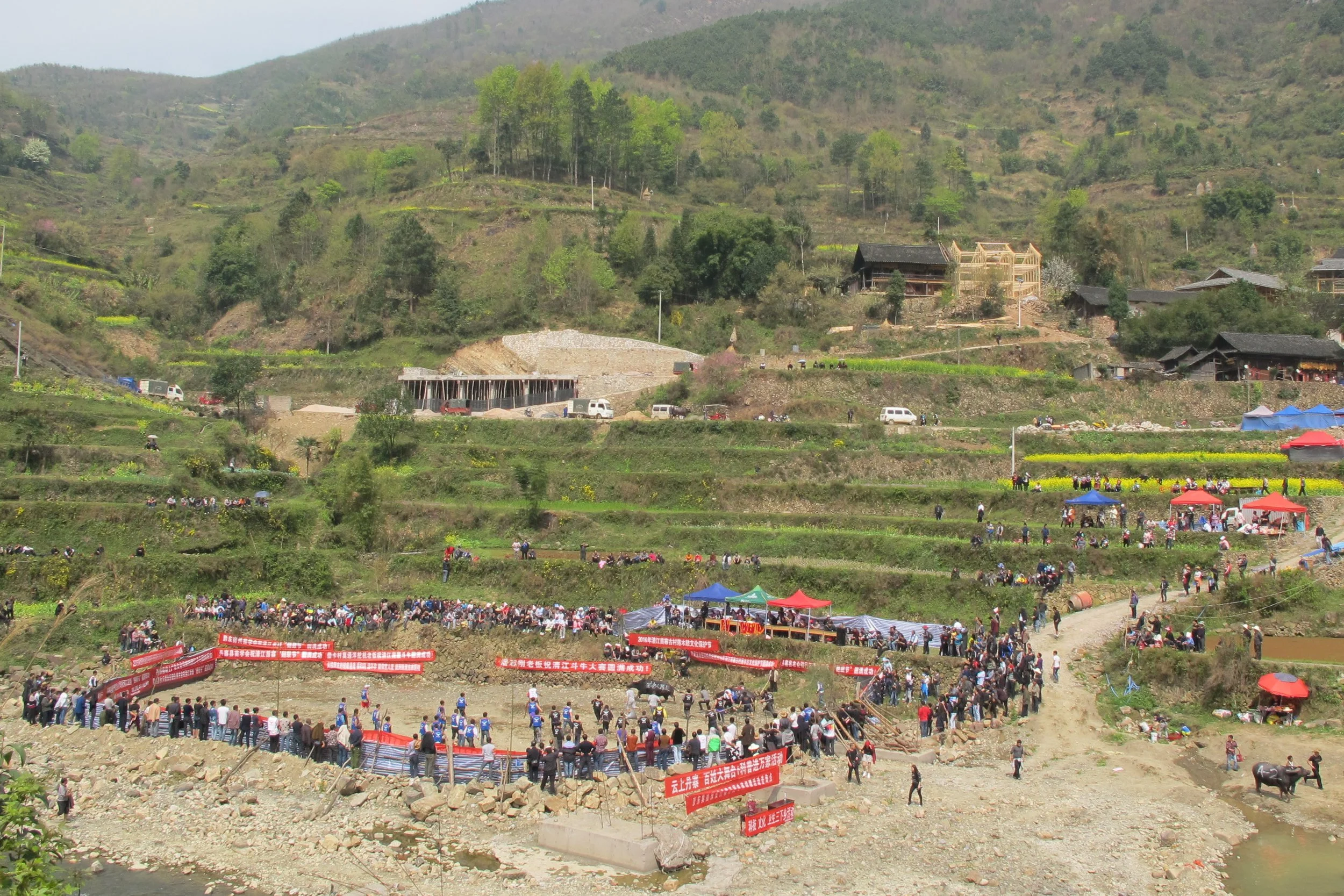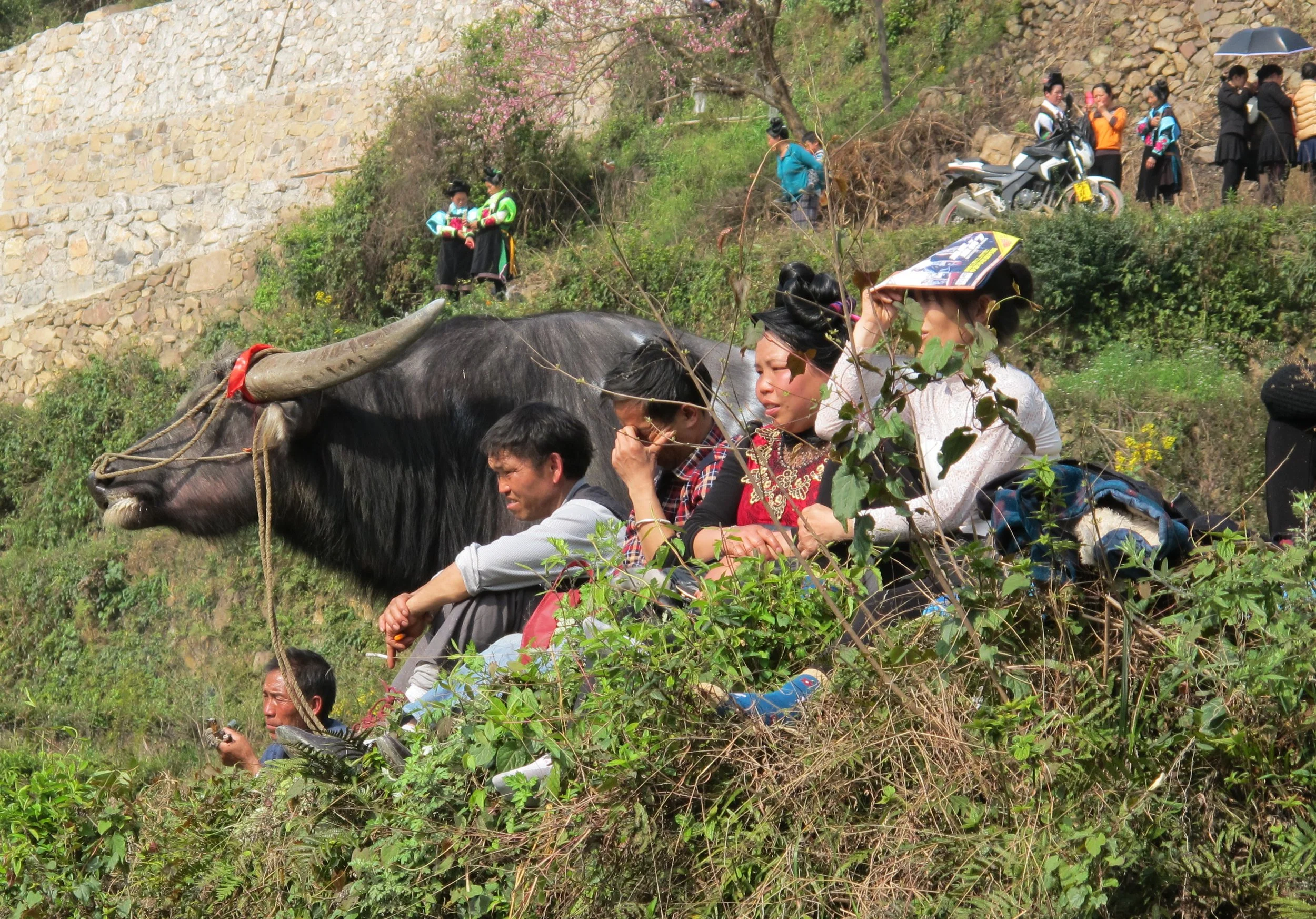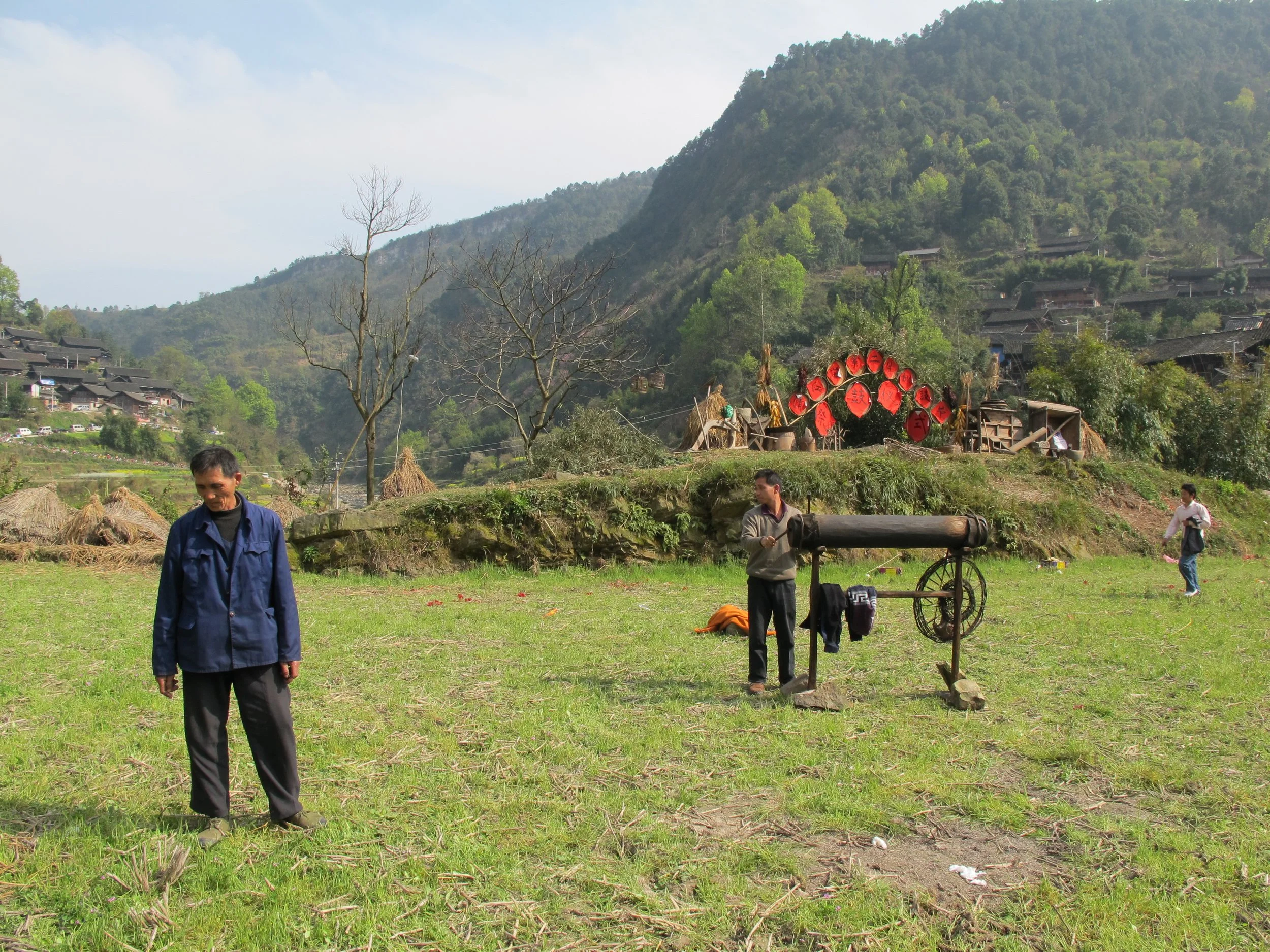Qinglang’s Miao Drum Festival: 情郎苗族寨木鼓节
Qinglang village’s wooden drum, with buffalo-hide tympanum. Note the essential wine flask hanging on the strap…
In March 2016 I spent a few hours at Qinglang village in southeast Guizhou, about 20 kilometres southwest of the regional centre, Kaili, having a look at their annual drum festival. My friend Li Maoqing wanted to take me to another village further out in the same direction, but on the bus we met a local man who told us Qinglang’s festival would be better.
The story goes that two Miao brothers migrated into the region and settled on opposite mountainsides, where they used the drums to keep in touch. The festival takes place in the second lunar month, before the start of the busy agricultural season, when the drums are “woken up” after being hidden away in caves through the winter. They festival is to entertain the ancestors and ask for a trouble-free year and bountiful harvest.
Qinglang’s bullring on festival day. Village just out of view top right
We got dropped off on the main road with a ten-minute walk up a track to Qinglang village. It was a small cluster of houses, the lanes and square crowded with men looking busy, running around organising everything. Qinglang is a Short Skirt Miao village but the women’s festival gear was fairly modest; they wore knee-length pleated skirts, blue jackets with a yellow or green sash, a small assemblage of silver necklaces, and complex piled hairdos fixed in place with brightly-coloured plastic flowers or combs. Many had babies strapped to their back inside embroidered baby carriers.
A group of women were dancing at the village gates, but the rythm and moves were more like square dancing than any Miao routine. Apparently this was the officially approved welcoming dance, cooked up by by Chinese choreographers from the Minorities Institute in Beijing, and the women were obliged to perform it for visiting dignitaries. As soon as the officials had finished their speeches and been driven away, the real festival began.
Bullfight in progress. Things end when one of the bulls runs off; the first time I have ever seen the spectators protected by barriers.
On far side of village, down past stalls selling plastic nick-nacks and snacks, the shingle of a dry river bed had been barricaded off for buffalo fights. These are battles of strength between two bulls, each daubed with a number and the name of the village they represent. Fights begin with bulls charging into each other head-on, wrestling and snorting for purchase; they end when one bull suddenly turns tail and runs off into the crowd.
Miao love their buffalos and there’s none of the bloodlust of Spanish bullfighting. If the contestants seem evenly matched or there’s any bloodshed, handlers jump in to rope the buffalos’ hind legs and separate them with sticks. Inbetween fights, owners take their buffalos down to a deep waterhole to groom and pimp them with red ribbons, and let the beasts cool off. One family even had their prize bull sitting with them in the grassy terrace overlooking the battleground.
Spectators watching the action below.
In a field on the far side of the river stood the drum itself, a long cylinder of wood fixed on its side in a frame. It was being overseen by the village shaman – the drum master – and his son. Miao festivals always involve a heavy intake of rice wine, and both men were extremely drunk, the drum master barely able to stand. As his son tapped away on the wood, the shaman told me the drum had been looked after by his family for eighteen generations.
Drum master and his son. Both working on their hangovers.
A group of girls in festival dress started singing in a piercing falsetto which, instead of using actual words, mimics the rythm and tones of set phrases, invented so people could communicate across the valleys. They were meant to be part of a dance team but their leader – the drum master’s daughter – couldn’t be found. They suspected she’d gone off somewhere discreet with her boyfriend...




